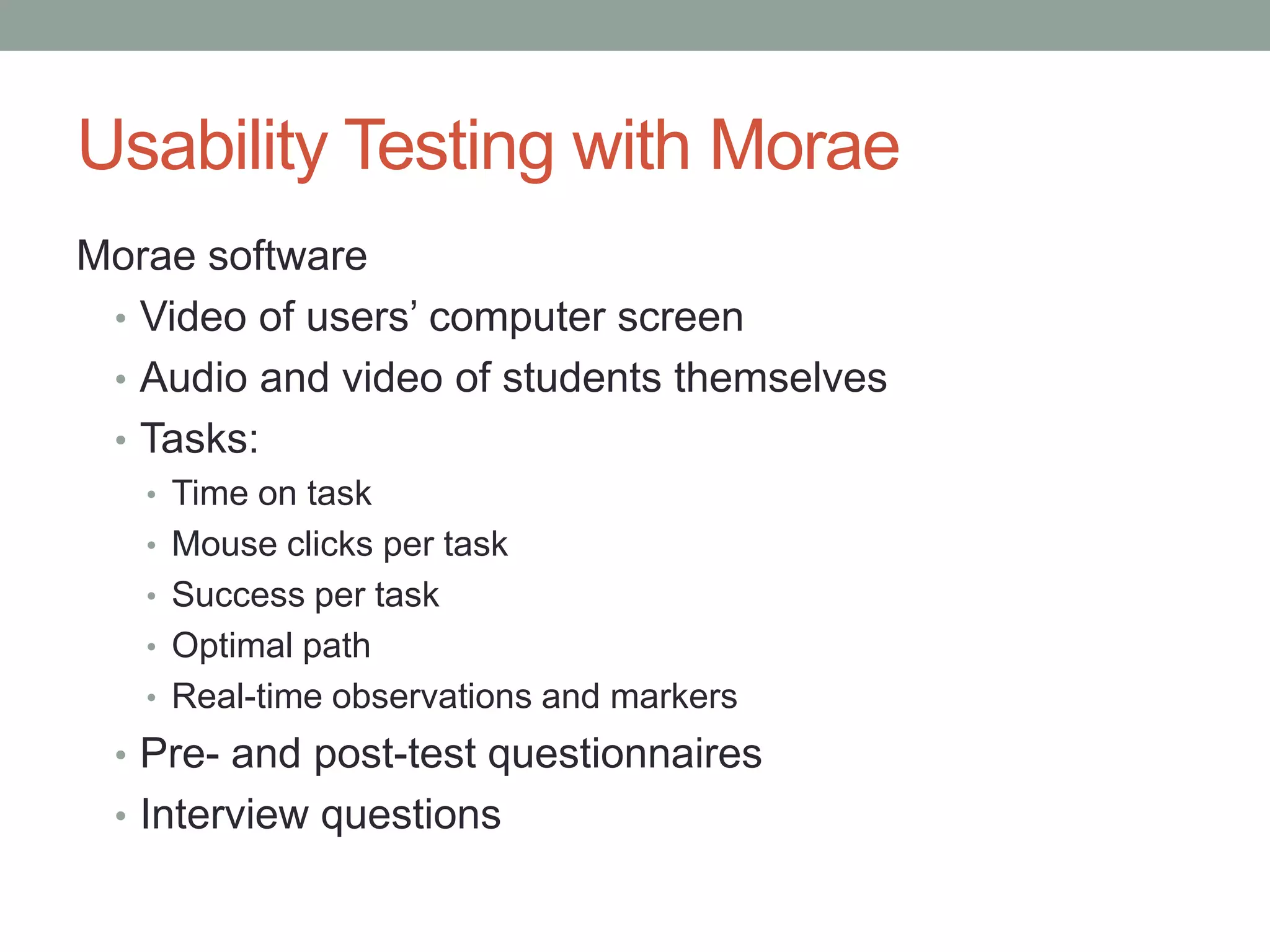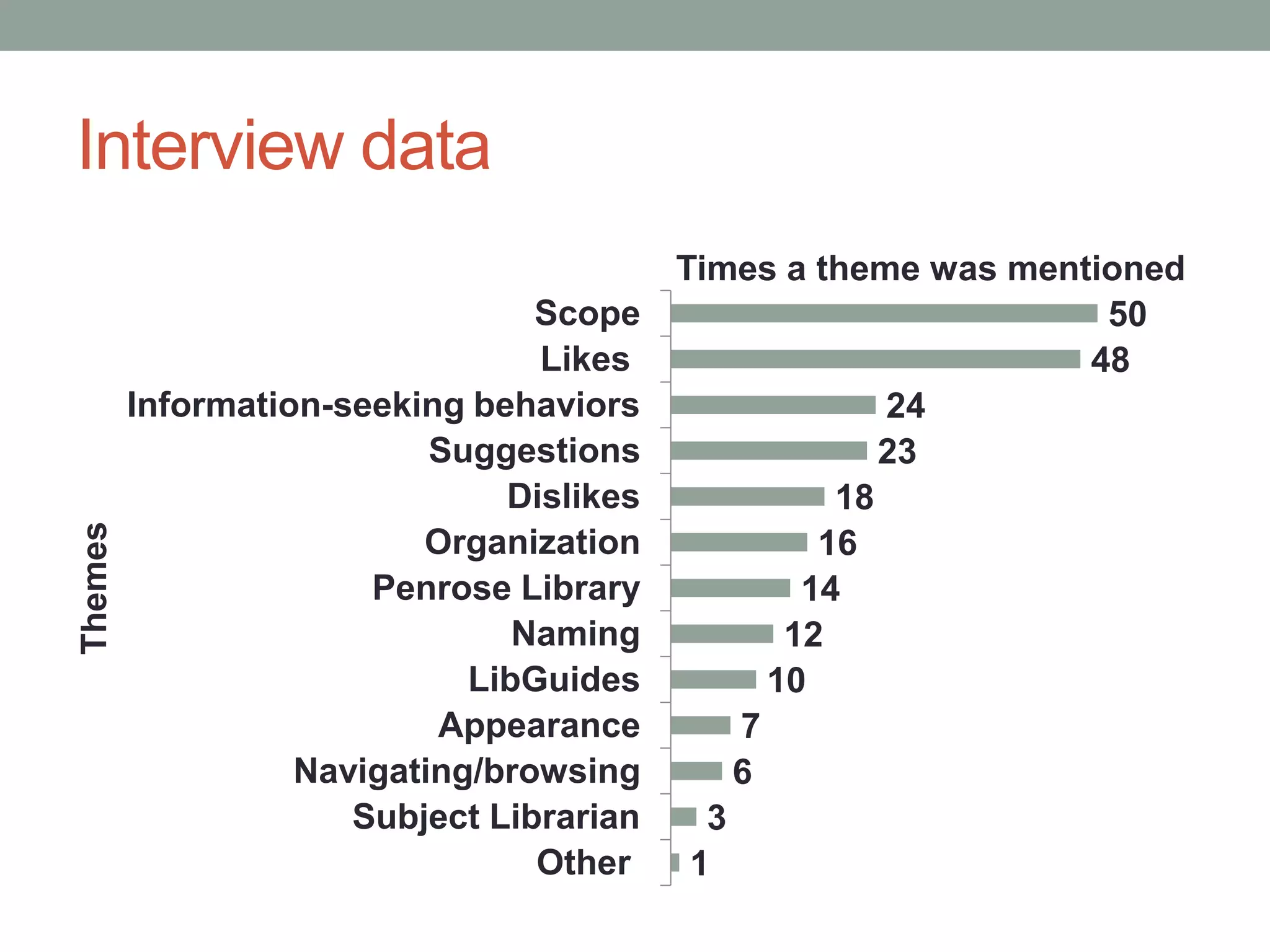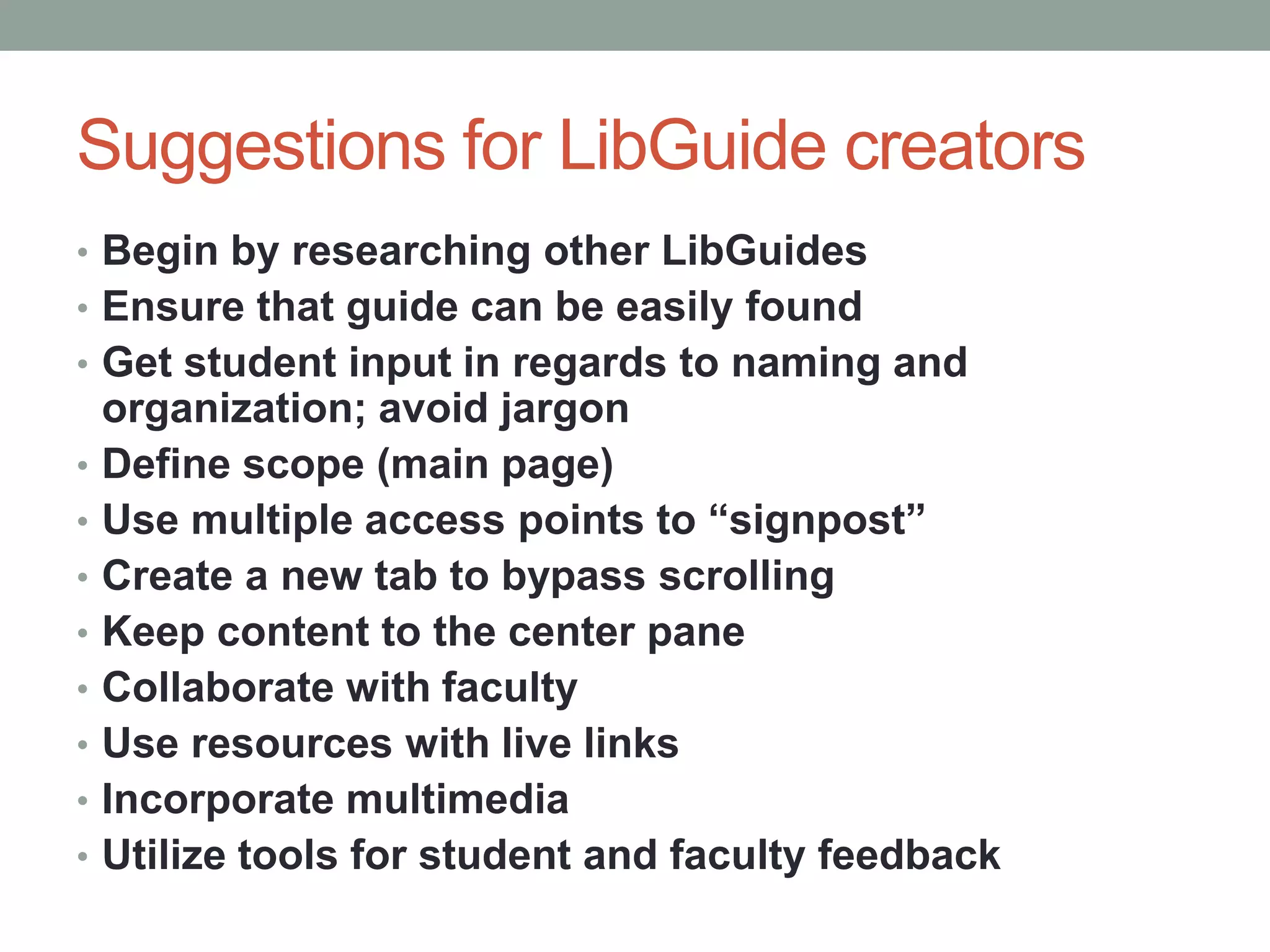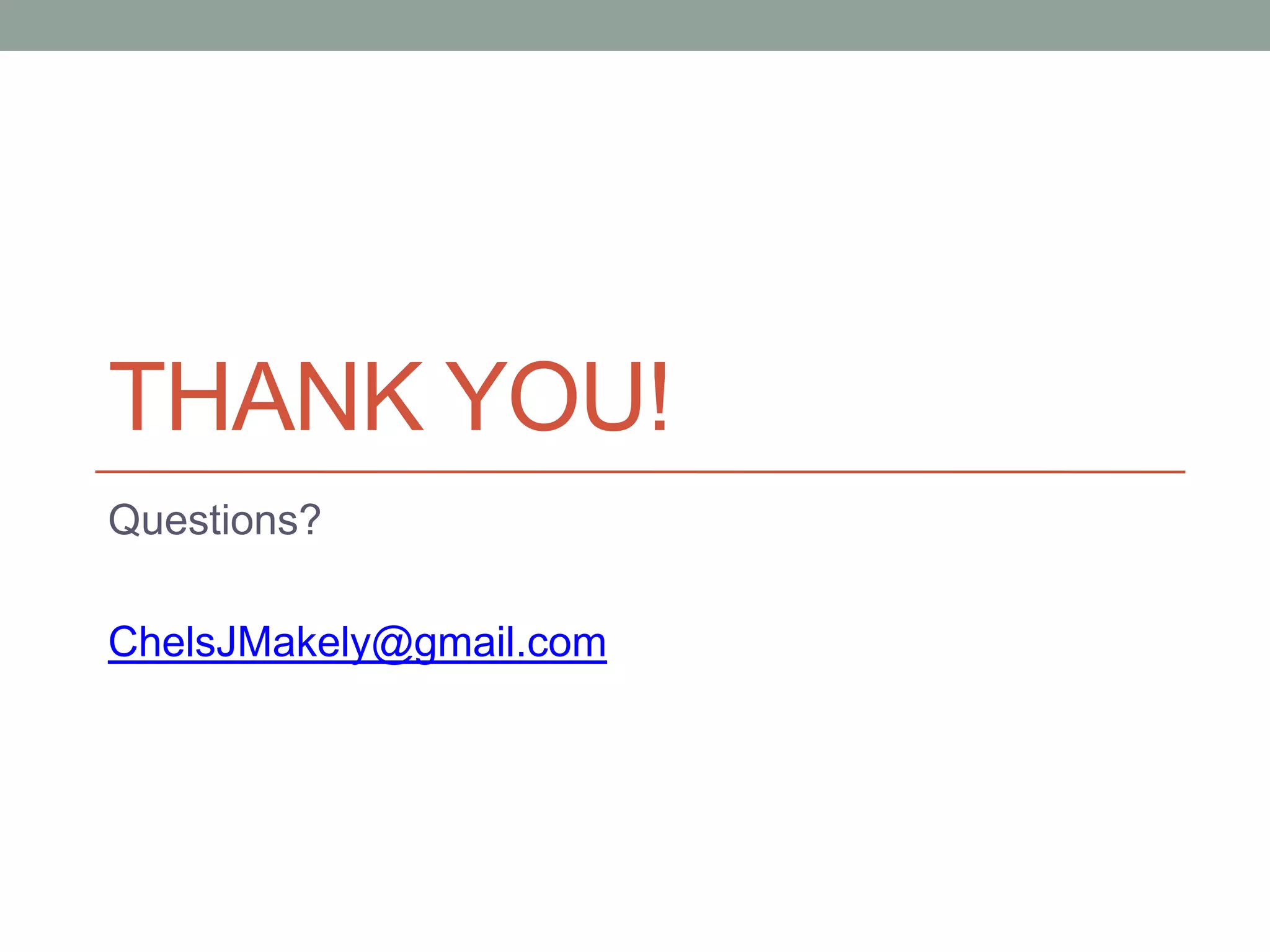This document summarizes a usability study conducted on the University of Denver's Library and Information Science (LIS) LibGuide. It provides background on the rise of LibGuides and their benefits. Shortcomings identified include guides being more useful for librarians than students and issues with content, organization, and maintenance. The study used Morae software to record users interacting with the LIS LibGuide and measure effectiveness, efficiency, and satisfaction. Interview themes that emerged included scope, likes, information-seeking behaviors, dislikes, organization, and suggestions for improvement. Suggestions for LibGuide creators focused on usability testing guides, ensuring easy discovery and navigation, incorporating student input, and collaborating with faculty.
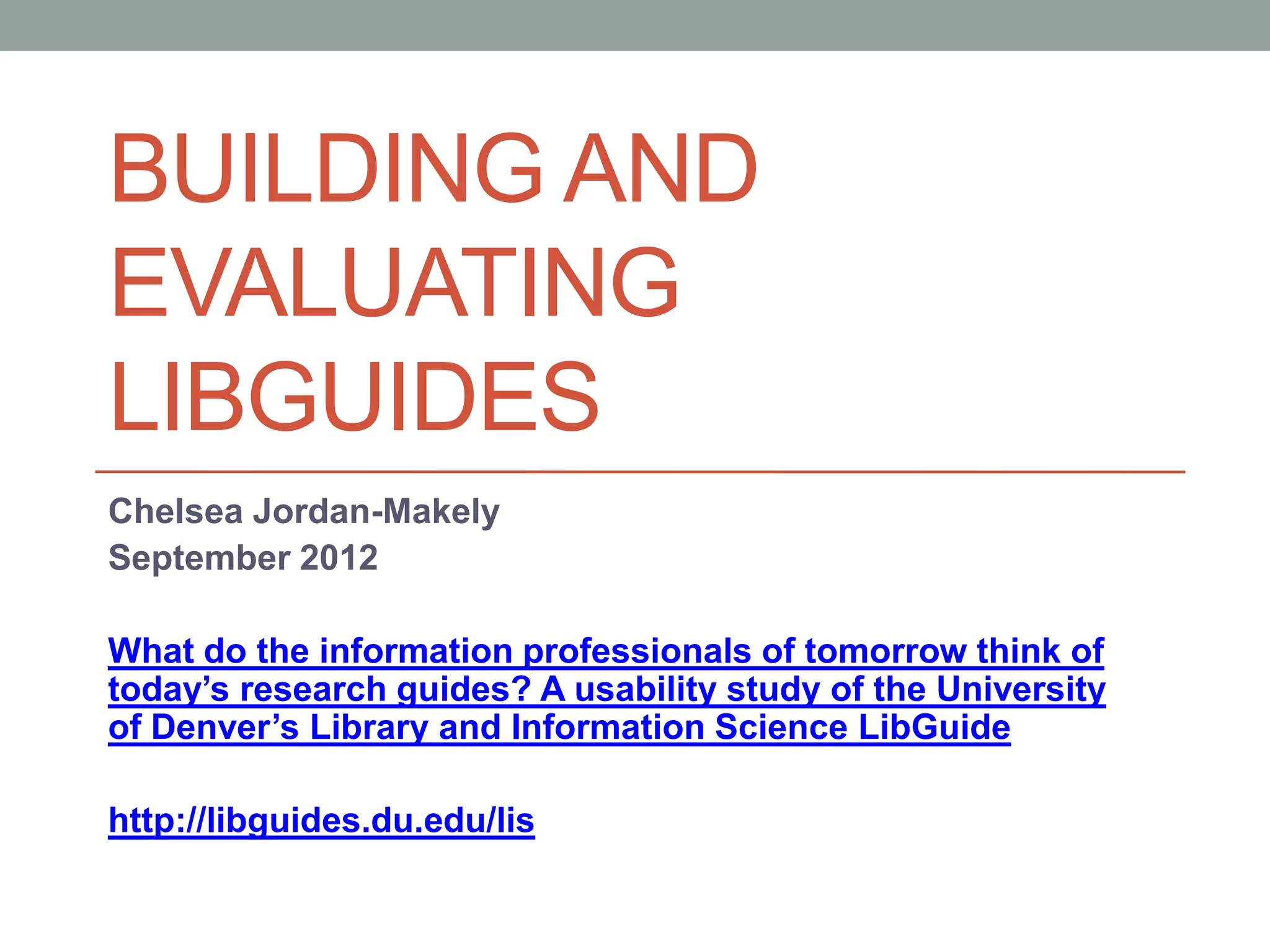
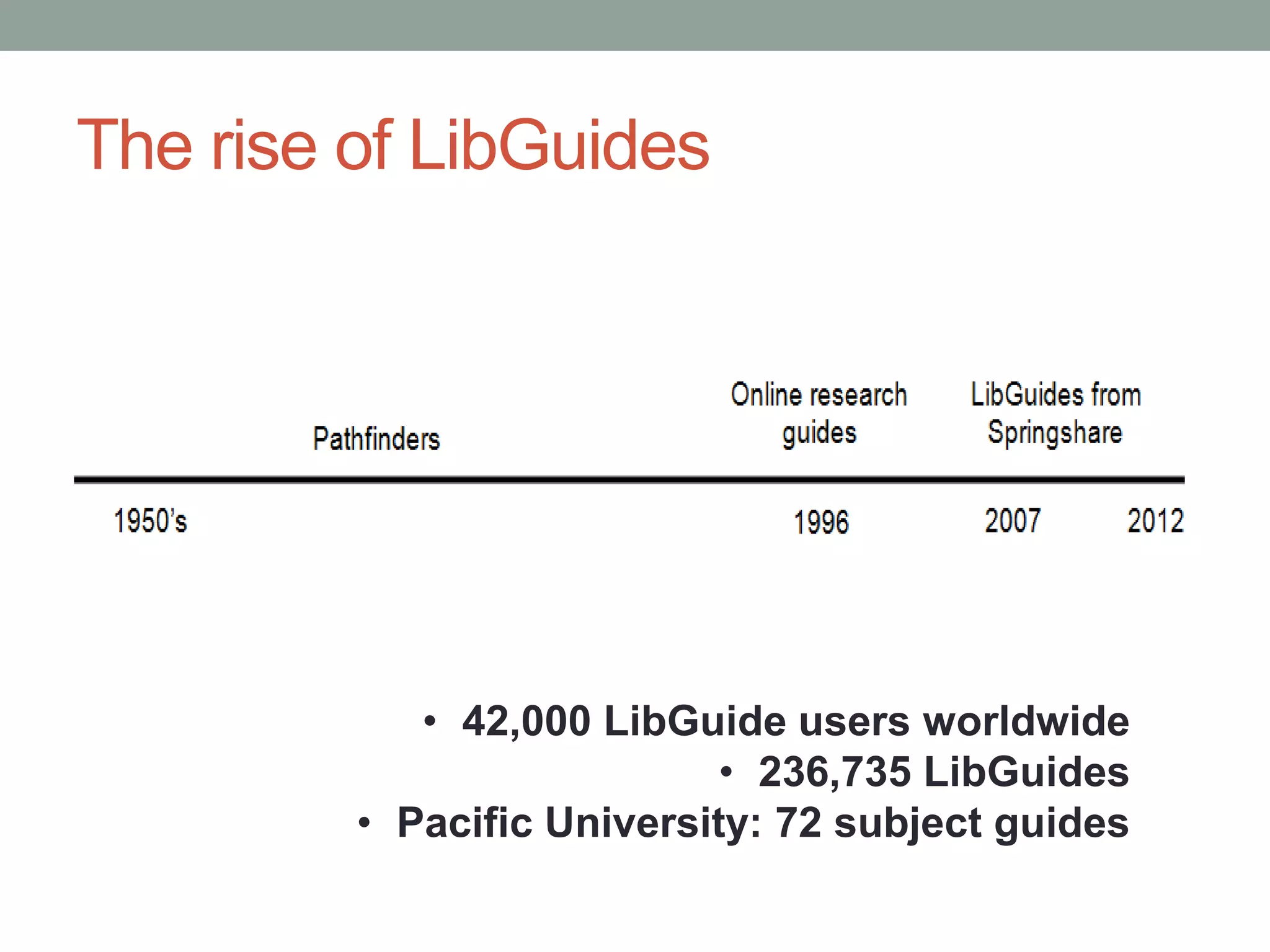
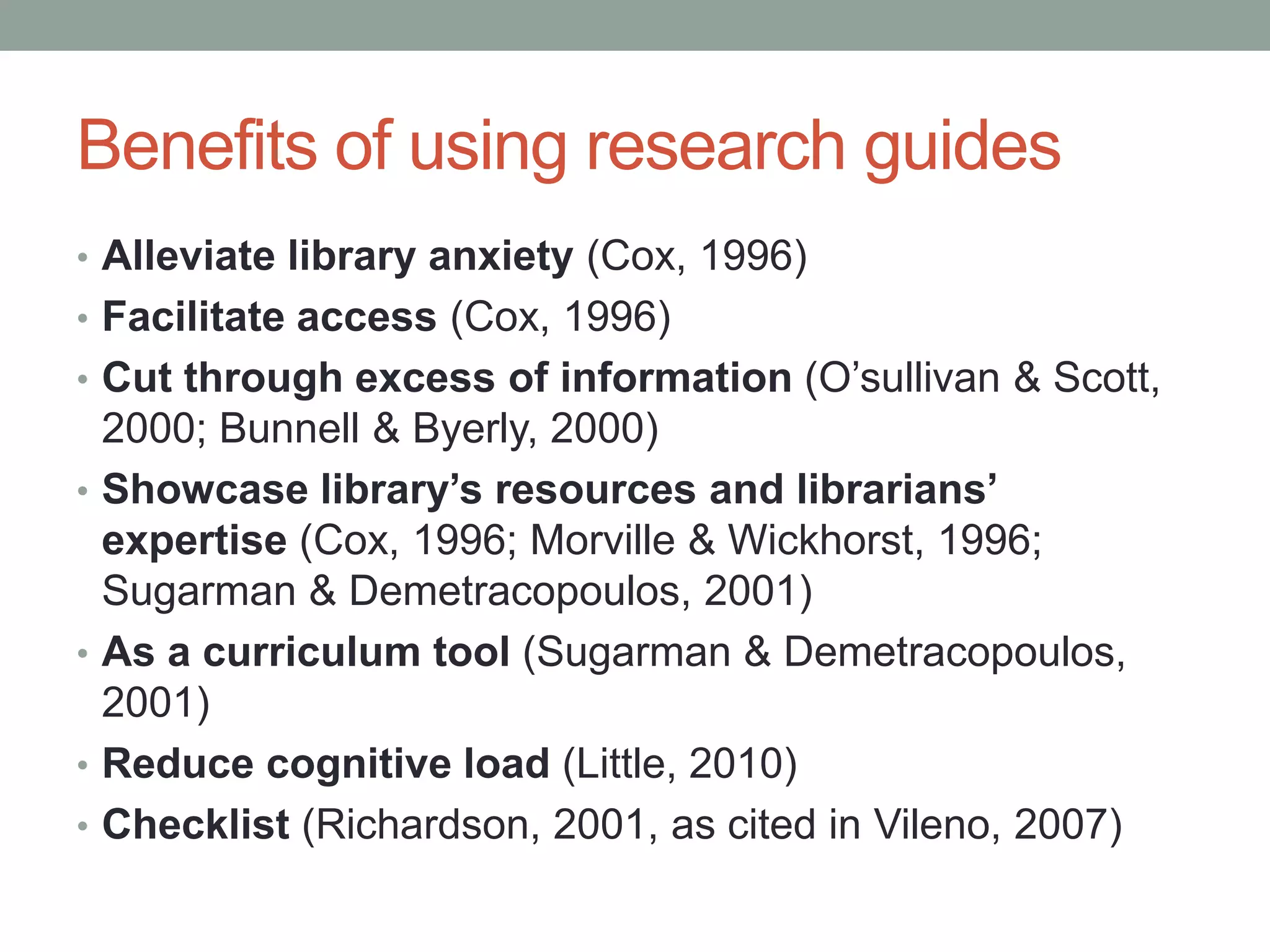
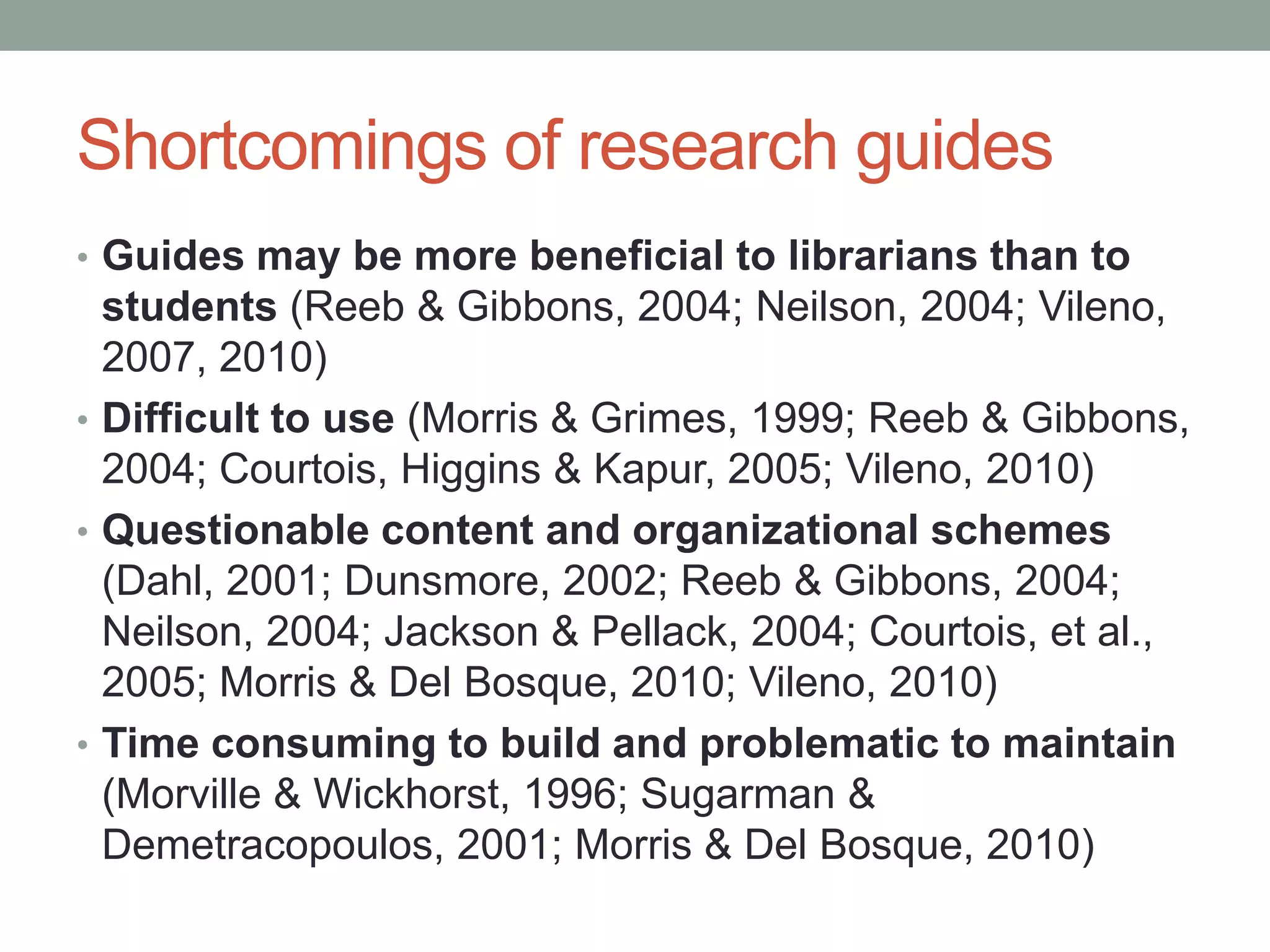
![Evaluating research guides
• Content analysis
• Need
• Organization
• Content
• Analytics
• Usage
• Usability Testing
• “Provide data on whether participants can accomplish the tasks
(effectiveness); do so in a reasonable amount of time and effort
(efficiency); show how [it’s used] (context), and . . . their reaction
to the product or service (satisfaction)” (Ward & Hiller, 2006, p.
154)
• Surveys
• Information-seeking behavior
• Satisfaction](https://image.slidesharecdn.com/buildingandevaluatinglibguides-120927125521-phpapp01/75/Building-and-evaluating-LibGuides-5-2048.jpg)
